Showing Spotlights 449 - 456 of 547 in category All (newest first):
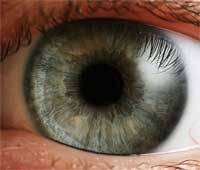 The human eye is an amazing organ. It is small, the eyeball itself weighs only about 7 grams, and it is amazingly sensitive. The eye can detect a single photon. The eye can be quicker then a race car - the young human eye can focus from infinity to 7cm in 350 milliseconds - but slow enough to witness a snail crawling across a beach. The eye can capture objects at various different angles, such as birds flying overhead or a person walking right beside you. Because the eye is such a complex optical system, it is not surprising that the list of diseases and infections that can endanger our vision is a long one. One common age-related condition is cataract. Cataract is caused by alterations in the protein structure of the lens which result in light scattering. The lens can then no longer transmit a clear picture to the retina where it can be processed and sent through the optic nerve to the brain. By age 65, over 40% of people have a cataract. Cataract is the most common cause of blindness in the world, although it is treatable. While cataract surgery is the most successful medical procedure, the inability to control penetration of the pharmacological agents into the lens and target specific intracellular biochemical pathways has impeded the success of pharmacological treatment of cataracts. Researchers are now studying the application of nanotechnology to eye lens diseases, in particular for new methods for visualizing and targeting specific intracellular mechanisms within the eye.
The human eye is an amazing organ. It is small, the eyeball itself weighs only about 7 grams, and it is amazingly sensitive. The eye can detect a single photon. The eye can be quicker then a race car - the young human eye can focus from infinity to 7cm in 350 milliseconds - but slow enough to witness a snail crawling across a beach. The eye can capture objects at various different angles, such as birds flying overhead or a person walking right beside you. Because the eye is such a complex optical system, it is not surprising that the list of diseases and infections that can endanger our vision is a long one. One common age-related condition is cataract. Cataract is caused by alterations in the protein structure of the lens which result in light scattering. The lens can then no longer transmit a clear picture to the retina where it can be processed and sent through the optic nerve to the brain. By age 65, over 40% of people have a cataract. Cataract is the most common cause of blindness in the world, although it is treatable. While cataract surgery is the most successful medical procedure, the inability to control penetration of the pharmacological agents into the lens and target specific intracellular biochemical pathways has impeded the success of pharmacological treatment of cataracts. Researchers are now studying the application of nanotechnology to eye lens diseases, in particular for new methods for visualizing and targeting specific intracellular mechanisms within the eye.
Jan 4th, 2008
 The concept of nanodentistry was introduced by Freitas in 2000: "Nanodentistry will make possible the maintenance of comprehensive oral health by employing nanomaterials, biotechnology including tissue engineering, and, ultimately, dental nanorobotics." Dental nanorobots are certainly many years off but researcher are making progress already with nanotechnology in dental care applications such as composites, bonding agents, and impression materials as well as nanostructured implant materials. For those of you with hypersensitive teeth, a new nanotechnology treatment proposed by researchers in Taiwan might one day bring pain relief. Dentine hypersensitivity (dentin is the main tissue that forms the shape of the tooth; this material exists between the pulp and the enamel, and is comprised of a series of dentinal tubules stacked on top of each other) leads to pain when fluid movement in dentinal tubules (microscopic canals that run from the outside of the dentin to the nerve inside the tooth) promotes mechanical deformation of nerve endings at the pulp/dentine interface, which is transmitted as a painful sensation. Researchers have found that sensitive teeth have an increased number of dentinal tubules (35.6% compared to 9.3%) and are wider in diameter than the dentinal tubules of non sensitive dentine. The Chinese researchers have demonstrated that this tubules can be blocked with the aid of gold nanoparticles. The world's smallest gold fillings, so to speak.
The concept of nanodentistry was introduced by Freitas in 2000: "Nanodentistry will make possible the maintenance of comprehensive oral health by employing nanomaterials, biotechnology including tissue engineering, and, ultimately, dental nanorobotics." Dental nanorobots are certainly many years off but researcher are making progress already with nanotechnology in dental care applications such as composites, bonding agents, and impression materials as well as nanostructured implant materials. For those of you with hypersensitive teeth, a new nanotechnology treatment proposed by researchers in Taiwan might one day bring pain relief. Dentine hypersensitivity (dentin is the main tissue that forms the shape of the tooth; this material exists between the pulp and the enamel, and is comprised of a series of dentinal tubules stacked on top of each other) leads to pain when fluid movement in dentinal tubules (microscopic canals that run from the outside of the dentin to the nerve inside the tooth) promotes mechanical deformation of nerve endings at the pulp/dentine interface, which is transmitted as a painful sensation. Researchers have found that sensitive teeth have an increased number of dentinal tubules (35.6% compared to 9.3%) and are wider in diameter than the dentinal tubules of non sensitive dentine. The Chinese researchers have demonstrated that this tubules can be blocked with the aid of gold nanoparticles. The world's smallest gold fillings, so to speak.
Jan 3rd, 2008
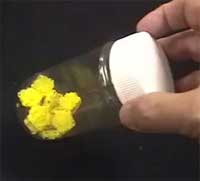 In 1954, Richard Buckminster Fuller was granted U.S. Pat. No. 2,682,235 for geodesic domes, a method of enclosing space in architectural applications. The geodesic dome combines the structural advantages of the sphere (which encloses the most space within the least surface, and is strongest against internal pressure) with those of the tetrahedron (which encloses least space with most surface and has the greatest stiffness against external pressure). Subsequently, soccer ball shaped carbon molecules known as fullerenes or buckyballs were named for their resemblance to a geodesic sphere. But is not only certain carbon molecules where Nature uses sphere-like forms. Spheres can be found at all scales in both the inanimate and living world for the basic physical property of encapsulation. Spherical virus capsids (a capsid is the protein shell of a virus), for example, enclose space by using the geometry of the icosahedron, thus exploiting the economy of this form in terms of both surface area-to-volume ratio and genetic efficiency of subunit-based symmetric assembly. Many viruses' capsids use icosahedral symmetry to form particles ranging from 20 to 200 nanometers in size. Researchers have now begun to copy Nature's icosahedral-symmetry design principles for molecular containers, which could solve the problem of designing and synthesizing stable molecular containers having very large interior.
In 1954, Richard Buckminster Fuller was granted U.S. Pat. No. 2,682,235 for geodesic domes, a method of enclosing space in architectural applications. The geodesic dome combines the structural advantages of the sphere (which encloses the most space within the least surface, and is strongest against internal pressure) with those of the tetrahedron (which encloses least space with most surface and has the greatest stiffness against external pressure). Subsequently, soccer ball shaped carbon molecules known as fullerenes or buckyballs were named for their resemblance to a geodesic sphere. But is not only certain carbon molecules where Nature uses sphere-like forms. Spheres can be found at all scales in both the inanimate and living world for the basic physical property of encapsulation. Spherical virus capsids (a capsid is the protein shell of a virus), for example, enclose space by using the geometry of the icosahedron, thus exploiting the economy of this form in terms of both surface area-to-volume ratio and genetic efficiency of subunit-based symmetric assembly. Many viruses' capsids use icosahedral symmetry to form particles ranging from 20 to 200 nanometers in size. Researchers have now begun to copy Nature's icosahedral-symmetry design principles for molecular containers, which could solve the problem of designing and synthesizing stable molecular containers having very large interior.
Dec 20th, 2007
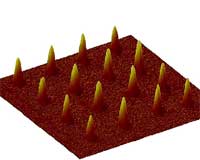 Past studies of photo-responsive proteins have generally dwelled on applications for energy-saving computer displays, light-based computing or computer memory. The general theme in the research tends to rely on the controllable and quick state change of the protein. But, the ability of the protein to actually incite a physical change in a composite macroscopic system has been largely unexplored. Harnessing this ability of the protein to incite change in a polymeric material could have broad implications in the field of biomedical and materials engineering. Getting bacteriorhodopsin to 'play ball' with other bulk materials could render those materials sensitive to a light. As a stimulus, light is often much easier to control than those typically explored by researchers such as bulk pH, temperature or electric fields.
Past studies of photo-responsive proteins have generally dwelled on applications for energy-saving computer displays, light-based computing or computer memory. The general theme in the research tends to rely on the controllable and quick state change of the protein. But, the ability of the protein to actually incite a physical change in a composite macroscopic system has been largely unexplored. Harnessing this ability of the protein to incite change in a polymeric material could have broad implications in the field of biomedical and materials engineering. Getting bacteriorhodopsin to 'play ball' with other bulk materials could render those materials sensitive to a light. As a stimulus, light is often much easier to control than those typically explored by researchers such as bulk pH, temperature or electric fields.
Dec 13th, 2007
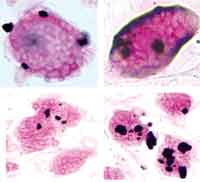 Carbon nanotubes (CNTs) have shown promise as an important new class of multifunctional building blocks and innovative tools in a large variety of nanotechnology applications, ranging from nanocomposite materials through nanoelectronics to biomedical devices (e.g. gene and drug carriers). The recent rapid development in nanotechnology has renewed the pressing demand for large-scale production of CNTs for potential applications in commercial products. The number of industrial-scale facilities for the increasingly low-cost production of multi-walled carbon nanotubes (MWCNTs) continues to grow, and with that the professional and public exposure to MWCNTs is expected to increase significantly in the coming years. Owing to their unusual one-dimensional hollow nanostructure and unique physicochemical properties, CNTs are particularly useful as novel drug delivery tools and imaging agents. However, such biomedical, and many other related, applications will not be realized if there is no proper assessment of the potential hazards of CNTs to humans and other biological systems. This situation prompted a group of researchers to carry out the first genotoxicity study of nanomaterials. Although the health effects of nanomaterials have attracted considerable attention, the scientific community has thus far focused primarily on the studies of nanomaterials toxicity at the cellular level. Very little is known about the toxicity at the molecular level, or genotoxicity, of nanomaterials in mammalian cells. Researchers at the University of Dayton have assessed the DNA damage response to MWCNTs in mouse embryonic stem cells (ES). This new work emphasizes the importance of careful scrutiny of the genotoxicity of nanomaterials.
Carbon nanotubes (CNTs) have shown promise as an important new class of multifunctional building blocks and innovative tools in a large variety of nanotechnology applications, ranging from nanocomposite materials through nanoelectronics to biomedical devices (e.g. gene and drug carriers). The recent rapid development in nanotechnology has renewed the pressing demand for large-scale production of CNTs for potential applications in commercial products. The number of industrial-scale facilities for the increasingly low-cost production of multi-walled carbon nanotubes (MWCNTs) continues to grow, and with that the professional and public exposure to MWCNTs is expected to increase significantly in the coming years. Owing to their unusual one-dimensional hollow nanostructure and unique physicochemical properties, CNTs are particularly useful as novel drug delivery tools and imaging agents. However, such biomedical, and many other related, applications will not be realized if there is no proper assessment of the potential hazards of CNTs to humans and other biological systems. This situation prompted a group of researchers to carry out the first genotoxicity study of nanomaterials. Although the health effects of nanomaterials have attracted considerable attention, the scientific community has thus far focused primarily on the studies of nanomaterials toxicity at the cellular level. Very little is known about the toxicity at the molecular level, or genotoxicity, of nanomaterials in mammalian cells. Researchers at the University of Dayton have assessed the DNA damage response to MWCNTs in mouse embryonic stem cells (ES). This new work emphasizes the importance of careful scrutiny of the genotoxicity of nanomaterials.
Dec 11th, 2007
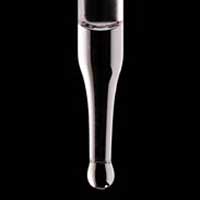 Pipettes (from the French: little pipe) are one of those ubiquitous tools you find in every chemical, medical or biology lab. The original pipette is made of glass and it works by creating a vacuum above the liquid-holding chamber and selectively releasing this vacuum to draw up and dispense liquid. With the advance of molecular biology, researchers required pipettes that were able to confine smaller and smaller amounts of specimen, not only for probing but also for injecting drugs, DNA etc. into cells - without damaging the cells, of course. Just a few months ago, researchers at the Brookhaven National Laboratory have developed what is thought to be the world's smallest pipette: made of a carbon-coated germanium nanowire it can hold a volume of only a few zeptoliters (a billionth of a trillionth of a liter, or one thousand cubic nanometers). Although today it even is possible to process the tip of a glass pipette to have an inner diameter as small as several tens of nanometers, this involves considerable problems in terms of the processing accuracy and the operability of the pipette, particularly in terms of locating the tip. It is generally considered that probes made from carbon nanotubes (CNTs) and nanoscale carbon pipes offer an attractive alternative to glass pipettes because of their small size, high mechanical strength, and high electrical conductivity. Researchers at the University of Pennsylvania have developed a manufacturing technique for carbon nanopipettes (CNPs) that does not require cumbersome nanoassembly and is amenable to mass production.
Pipettes (from the French: little pipe) are one of those ubiquitous tools you find in every chemical, medical or biology lab. The original pipette is made of glass and it works by creating a vacuum above the liquid-holding chamber and selectively releasing this vacuum to draw up and dispense liquid. With the advance of molecular biology, researchers required pipettes that were able to confine smaller and smaller amounts of specimen, not only for probing but also for injecting drugs, DNA etc. into cells - without damaging the cells, of course. Just a few months ago, researchers at the Brookhaven National Laboratory have developed what is thought to be the world's smallest pipette: made of a carbon-coated germanium nanowire it can hold a volume of only a few zeptoliters (a billionth of a trillionth of a liter, or one thousand cubic nanometers). Although today it even is possible to process the tip of a glass pipette to have an inner diameter as small as several tens of nanometers, this involves considerable problems in terms of the processing accuracy and the operability of the pipette, particularly in terms of locating the tip. It is generally considered that probes made from carbon nanotubes (CNTs) and nanoscale carbon pipes offer an attractive alternative to glass pipettes because of their small size, high mechanical strength, and high electrical conductivity. Researchers at the University of Pennsylvania have developed a manufacturing technique for carbon nanopipettes (CNPs) that does not require cumbersome nanoassembly and is amenable to mass production.
Dec 7th, 2007
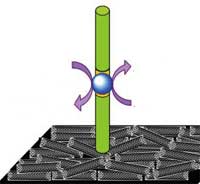 Molecular bioelectronics is a rapidly progressing research field that is concerned with the movement of electrons and ions within living systems. This field brings together the strengths of biological reactions and biochemical interactions from nature with electronic signal detection and amplification of human electronics technology. The result will be new applications in medicine, diagnostics and therapeutics that would never be imaginable within the limitations of each separated domain. One day, bioelectronic devices could even be be directly involved in electrical communication with signal producing or controlling molecules, organelles or structures within our bodies. A more short-term goal, though, is the development of biosensors (such as enzyme-based sensors and DNA sensors) to combine the extraordinary specificity of biochemical receptors with general purpose microelectronics to develop selective probes for diagnostics, drug screening, and toxin detection. An example of recent advances in the field is the work of researchers in the U.S. who have designed an integrated nanobioelectronic system, exploiting the distinct properties of nanowires and carbon-nanotubes, for triggering reversibly and on-demand bioelectrocatalytic transformations of alcohols. Such an adaptive magneto-switchable nanobioelectronic system exploits the distinct properties of its individual nanomaterial components, can be extended to a wide range of biocatalytic systems, and offers great promise for regulating the operation of biofuel cells, bioreactors, and biosensing devices in response to specific needs.
Molecular bioelectronics is a rapidly progressing research field that is concerned with the movement of electrons and ions within living systems. This field brings together the strengths of biological reactions and biochemical interactions from nature with electronic signal detection and amplification of human electronics technology. The result will be new applications in medicine, diagnostics and therapeutics that would never be imaginable within the limitations of each separated domain. One day, bioelectronic devices could even be be directly involved in electrical communication with signal producing or controlling molecules, organelles or structures within our bodies. A more short-term goal, though, is the development of biosensors (such as enzyme-based sensors and DNA sensors) to combine the extraordinary specificity of biochemical receptors with general purpose microelectronics to develop selective probes for diagnostics, drug screening, and toxin detection. An example of recent advances in the field is the work of researchers in the U.S. who have designed an integrated nanobioelectronic system, exploiting the distinct properties of nanowires and carbon-nanotubes, for triggering reversibly and on-demand bioelectrocatalytic transformations of alcohols. Such an adaptive magneto-switchable nanobioelectronic system exploits the distinct properties of its individual nanomaterial components, can be extended to a wide range of biocatalytic systems, and offers great promise for regulating the operation of biofuel cells, bioreactors, and biosensing devices in response to specific needs.
Dec 6th, 2007
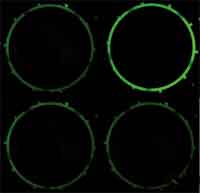 The human body so far is the ultimate 'wet computer' - a highly efficient, biomolecule-based information processor that relies on chemical, optical and electrical signals to operate. Researchers are trying various routes to mimic some of the body's approaches to computing. Especially research related to molecular logic gates is a fast growing and very active area. Already, common logic gates, which are used in conventional silicon circuitry, can be also mimicked at the molecular level. Chemists have reported that a molecular logic gate has the potential for calculation on the nanometer scale, which is unparalleled in silicon-based devices. The general character of the concept of binary logic allows the substitution of electrical signals by chemical and optical signals, which for example opens access to a vast pool of photoactive molecules to be used for the purpose of molecular logic. Molecular logic gate structures using fluorescence changes have been studied intensively using various inputs, such as pH, metal ions, and anions. Now, South Korean scientists using solutions of fluorescent sensor molecules - and, for the first time, proteins - have developed the first soluble molecular logic gates. By using a microfluidic device, input solutions are routed into a central loop, which is filled with a fluorescent sensor solution. There the solutions mix and, in certain combinations, switch the fluorescence 'output' on or off.
The human body so far is the ultimate 'wet computer' - a highly efficient, biomolecule-based information processor that relies on chemical, optical and electrical signals to operate. Researchers are trying various routes to mimic some of the body's approaches to computing. Especially research related to molecular logic gates is a fast growing and very active area. Already, common logic gates, which are used in conventional silicon circuitry, can be also mimicked at the molecular level. Chemists have reported that a molecular logic gate has the potential for calculation on the nanometer scale, which is unparalleled in silicon-based devices. The general character of the concept of binary logic allows the substitution of electrical signals by chemical and optical signals, which for example opens access to a vast pool of photoactive molecules to be used for the purpose of molecular logic. Molecular logic gate structures using fluorescence changes have been studied intensively using various inputs, such as pH, metal ions, and anions. Now, South Korean scientists using solutions of fluorescent sensor molecules - and, for the first time, proteins - have developed the first soluble molecular logic gates. By using a microfluidic device, input solutions are routed into a central loop, which is filled with a fluorescent sensor solution. There the solutions mix and, in certain combinations, switch the fluorescence 'output' on or off.
Dec 5th, 2007
 The human eye is an amazing organ. It is small, the eyeball itself weighs only about 7 grams, and it is amazingly sensitive. The eye can detect a single photon. The eye can be quicker then a race car - the young human eye can focus from infinity to 7cm in 350 milliseconds - but slow enough to witness a snail crawling across a beach. The eye can capture objects at various different angles, such as birds flying overhead or a person walking right beside you. Because the eye is such a complex optical system, it is not surprising that the list of diseases and infections that can endanger our vision is a long one. One common age-related condition is cataract. Cataract is caused by alterations in the protein structure of the lens which result in light scattering. The lens can then no longer transmit a clear picture to the retina where it can be processed and sent through the optic nerve to the brain. By age 65, over 40% of people have a cataract. Cataract is the most common cause of blindness in the world, although it is treatable. While cataract surgery is the most successful medical procedure, the inability to control penetration of the pharmacological agents into the lens and target specific intracellular biochemical pathways has impeded the success of pharmacological treatment of cataracts. Researchers are now studying the application of nanotechnology to eye lens diseases, in particular for new methods for visualizing and targeting specific intracellular mechanisms within the eye.
The human eye is an amazing organ. It is small, the eyeball itself weighs only about 7 grams, and it is amazingly sensitive. The eye can detect a single photon. The eye can be quicker then a race car - the young human eye can focus from infinity to 7cm in 350 milliseconds - but slow enough to witness a snail crawling across a beach. The eye can capture objects at various different angles, such as birds flying overhead or a person walking right beside you. Because the eye is such a complex optical system, it is not surprising that the list of diseases and infections that can endanger our vision is a long one. One common age-related condition is cataract. Cataract is caused by alterations in the protein structure of the lens which result in light scattering. The lens can then no longer transmit a clear picture to the retina where it can be processed and sent through the optic nerve to the brain. By age 65, over 40% of people have a cataract. Cataract is the most common cause of blindness in the world, although it is treatable. While cataract surgery is the most successful medical procedure, the inability to control penetration of the pharmacological agents into the lens and target specific intracellular biochemical pathways has impeded the success of pharmacological treatment of cataracts. Researchers are now studying the application of nanotechnology to eye lens diseases, in particular for new methods for visualizing and targeting specific intracellular mechanisms within the eye.
 Subscribe to our Nanotechnology Spotlight feed
Subscribe to our Nanotechnology Spotlight feed





